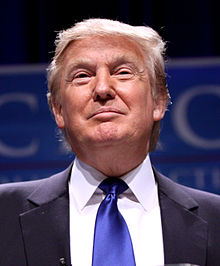
Trump’s demographic challenge
One of the assumptions of Donald Trump's campaign (and many other Republican candidates who have since dropped out or suspended their campaigns) appears to be that he can generate a surge of support from white working class voters (defined roughly as whites without a college education). Over at FiveThirtyEight.com, analyst David Wasserman takes a look at the numbers and suggests that even if larger numbers of these voters do turn out, they might not be in the right states to help Trump:
‘Missing’ White Voters Might Help Trump, But Less So Where He Needs It
A common refrain is that demographics will ultimately doom Donald Trump’s candidacy. His most reliable supporters have been whites without college degrees — a group that made up 65 percent of voters in 1980 but is on pace to make up just 33 percent in 2016. Meanwhile, nonwhite voters, with whom Trump is extremely unpopular, rose from 12 percent of the electorate in 1980 to 28 percent in 2012.
However, there was one year during that period when the white share of the electorate ticked up 2 percentage points: 1992. What happened in 1992? It was the last time an ideology-defying, billionaire outsider stirred up a nationwide frenzy. For Democrats, Ross Perot is an eerie precedent....
The good news for Trump is that nationally, there’s plenty of room for white turnout to improve. If non-Hispanic whites had turned out at the same rate in 2012 that they did in 1992, there would have been 8.8 million additional white voters — far more than Obama’s 5 million-vote margin of victory. But before Democrats panic, here’s the catch, and it’s a doozy for Trump: These “missing” white voters disproportionately live in states that won’t matter in a close presidential race.
Between 1992 and 2012, white turnout dropped from 71 percent to 63 percent in the 38 non-Electoral College battleground states.1 There were huge double-digit declines in relatively Perot-friendly places such as Alaska, upstate New York and Utah. But in the 12 key battleground states, white turnout dropped more modestly, from 69 percent to 66 percent. There was virtually no white drop-off in Pennsylvania, and white turnout increased in New Hampshire and Virginia.
There were only three states where the estimated number of “missing” white voters exceeded Obama’s margin of victory in 2012: Florida, Nevada and Ohio. In the case of Florida, Trump would need to win only 58 percent of “missing” whites to erase Obama’s 2012 margin; in Ohio he would need 75 percent, and in Nevada he would need 89 percent. Everywhere else, Trump would likely need 2016 white turnout to outpace historic 1992 levels to succeed.
If the analysis is correct, Trump's core of support is unlikely to be enough to carry him to victory in November. All candidates face this challenge of course, but Trump seems less interested than many others in modifying his positions, rhetoric, or demeanor in a way that might make it possible to accomplish.



